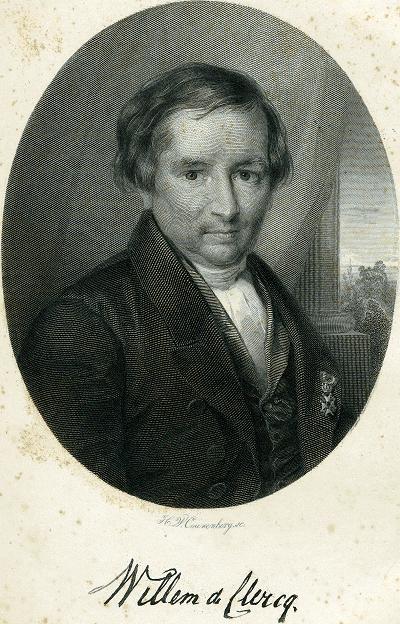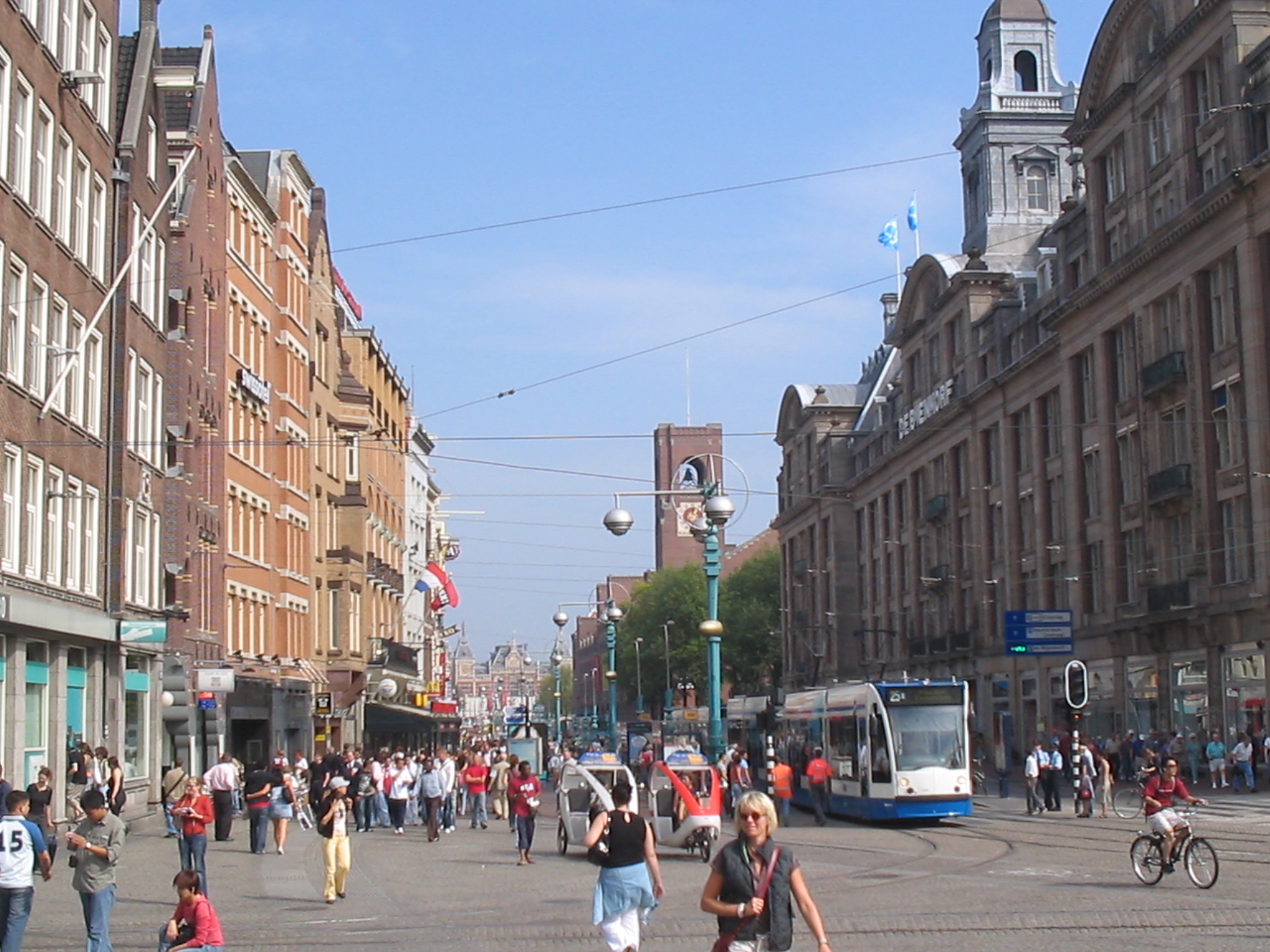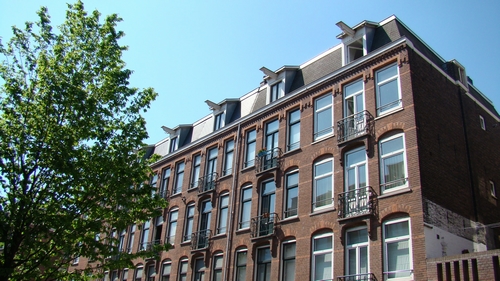|
De Clercqstraat
The De Clercqstraat is a street in Amsterdam-West, Netherlands. It runs between the Singelgracht and . The street is named for Willem de Clercq (1795–1844), poet and Christian revivalist. Before construction of the De Clercqstraat at the end of the 19th century, it was the site of a canal, the Lange Bleekerssloot, which was filled in during 1895. The Rozengracht, the extension of De Clercqstraat on the eastern end, was filled in at the same time and a passage towards the Dam, the Raadhuisstraat, was cleared, creating a new axial road connecting the city centre with the newer districts towards the West. See also *List of streets in Amsterdam List of streets in Amsterdam A * Anjeliersgracht Now named Westerstraat, the street filled in in 1861. D *Damrak * De Clercqstraat E *Elandsgracht F *Ferdinand Bolstraat G * Goudsbloemgracht H *Heiligeweg J * Jodenbreestraat K *Kalverstr ... Amsterdam-West Streets in Amsterdam {{Netherlands-road-stub ... [...More Info...] [...Related Items...] OR: [Wikipedia] [Google] [Baidu] |
Singelgracht
The Singelgracht () is the waterway that borders the entire Amsterdam Center and flows along the Nassaukade, Stadhouderskade and Mauritskade. Formerly the canal and the ramparts on the city side formed the outer defenses of the city. Name The name is related to the Dutch word ''omsingelen'', "to surround", and comes ultimately from Latin ''cingulum'', meaning "belt". Other Dutch towns also have ring-shaped canals named Singel. History and course After the fourth expansion of the canal ring around 1660, the outer canal – with the ramparts that formed the defenses – became the boundary of the city. Within these ramparts there were strongholds on which mills were placed. As a result, the canal had a curvy course. Parallel to the Singelgracht, on the inside of the ramparts lay the Lijnbaansgracht, named after the lanes that lay there. Parts of the strongholds were demolished and the canal was straightened there. The old winding course can still be recognized in a few place ... [...More Info...] [...Related Items...] OR: [Wikipedia] [Google] [Baidu] |
Willem De Clercq
Willem de Clercq (15 January 1795 – 4 February 1844) was a poet and leader of the Réveil, the Protestant Church Revival in the Netherlands. He is known for his diary entries, which contain extensive reports of the events he witnessed. He was also a secretary (1824-1831) and later a director (1831–1844) of the Netherlands Trading Society (''Nederlandsche Handel-Maatschappij'' or ''NHM''). Personal life Willem de Clercq was born in Amsterdam to a wealthy Amsterdam Mennonite family of grain merchants. His father was Gerrit de Clercq and his mother was Maria de Vos. In 1801, he began to write notes about various events he encountered in his life, which later formed a diary, Dagboek (autobiography), with a total of 36,000 pages that he kept from the year 1811 until his death. Planning to be a preacher in the Netherlands, he learned German, French, and Greek. However, due to Napoleon's invasion of 1813, he was displaced - events which are described in Dagboek. In 1816, De Clerc ... [...More Info...] [...Related Items...] OR: [Wikipedia] [Google] [Baidu] |
Rozengracht
The Rozengracht is a street in the Jordaan neighbourhood of Amsterdam. It runs between the Prinsengracht at the Westermarkt and the Singel canal at De Clercqstraat. The name means "Rose canal". The Rozengracht is one of the six former canals in the Jordaan. The reasons for filling in the 17th-century canal in 1890 were poor hygiene from polluted water, and the need for a broad exit road to the new neighborhoods west of the Singel canal. De Clercqstraat was built in 1895 as a westward extension of the Rozengracht. To the east, in the direction of the Dam, the street continues into Raadhuisstraat. Rozenstraat runs parallel to the Rozengracht. Famous residents *The painter Rembrandt van Rijn spent his last thirteen years of life, from 1656 to 1669, on the Rozengracht, in a building near the Lijnbaansgracht. *The tobacco pipe maker Eduard Bird (c. 1610–65) owned two adjoining houses on the Rozengracht between the two middle bridges. *Other people who lived on Rozengracht incl ... [...More Info...] [...Related Items...] OR: [Wikipedia] [Google] [Baidu] |
List Of Streets In Amsterdam
List of streets in Amsterdam A * Anjeliersgracht Now named Westerstraat, the street filled in in 1861. D *Damrak * De Clercqstraat E *Elandsgracht F *Ferdinand Bolstraat G * Goudsbloemgracht H *Heiligeweg J * Jodenbreestraat K *Kalverstraat * Kromme Waal L * Lindengracht M *Markengracht *Marnixstraat is a main street in Amsterdam. A large bus depot and the main police station are located on the street. * Martelaarsgracht N *Nes (Amsterdam) * Nieuwe Achtergracht *Nieuwendijk, Amsterdam * Nieuwezijds Achterburgwal * Nieuwezijds Voorburgwal P * P.C. Hooftstraat * Palmgracht *Prins Hendrikkade R * Raadhuisstraat * Rapenburg (Amsterdam) *Rokin *Rozengracht S *Sarphatistraat * Scheepstimmermanstraat *Singel *Sint Antoniesbreestraat * Spiegelgracht * Spuistraat V * Vijzelgracht W *Warmoesstraat * Westerstraat Z *Zeedijk Zeedijk (''English'': "Sea dike") is a street in the old centre of Amsterdam. The street is the northern and eastern boundary of De Wallen red-ligh ... [...More Info...] [...Related Items...] OR: [Wikipedia] [Google] [Baidu] |
Amsterdam-West
Amsterdam-West () is a borough (Dutch: ''stadsdeel'') of Amsterdam, Netherlands, to the west of the centre of the city. This borough was formed in 2010 through the merging of four former boroughs Oud West, Westerpark, De Baarsjes and Bos en Lommer. This part of Amsterdam was built roughly between the end of the 19th century and 1960. In 2013, the borough had approximately 142,700 inhabitants. With about 14,000 inhabitants per km2, West is also the most densely populated borough of Amsterdam. History The borough of Amsterdam-West consists primarily of the pre-World War II part of Amsterdam to the west of the Singelgracht. The western expansion beyond the 17th-century Amsterdam canal belt started in the last quarter of the 19th century. The first neighborhoods to be built were Spaarndammerbuurt, parts of Zeeheldenbuurt, Staatsliedenbuurt, Kinkerbuurt and Overtoombuurt. These neighborhoods are characterised by ''revolutiebouw'' (literally: 'revolution architecture'): quickly a ... [...More Info...] [...Related Items...] OR: [Wikipedia] [Google] [Baidu] |


